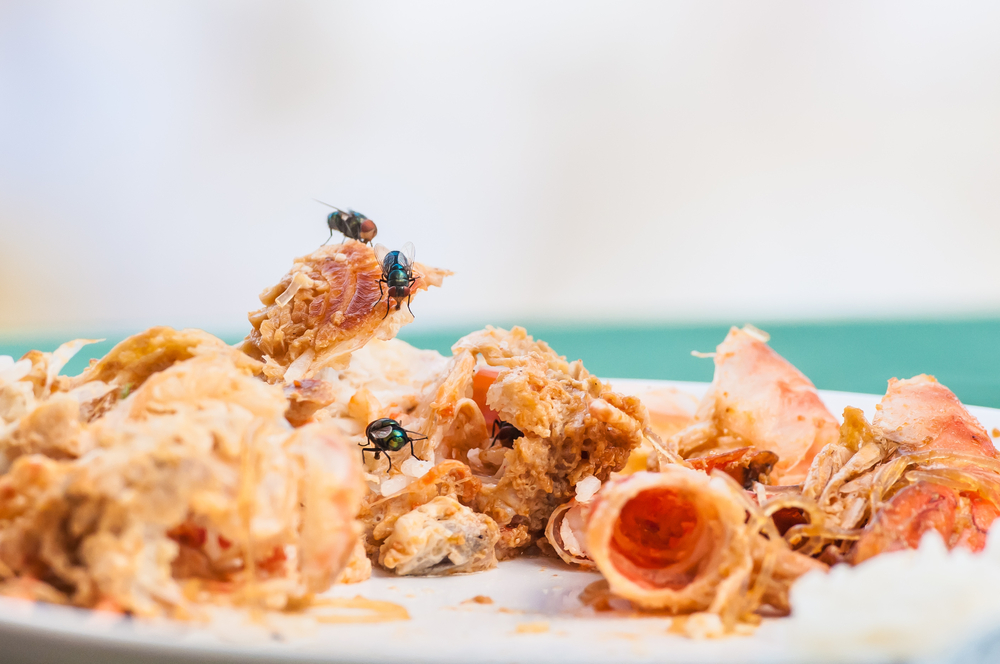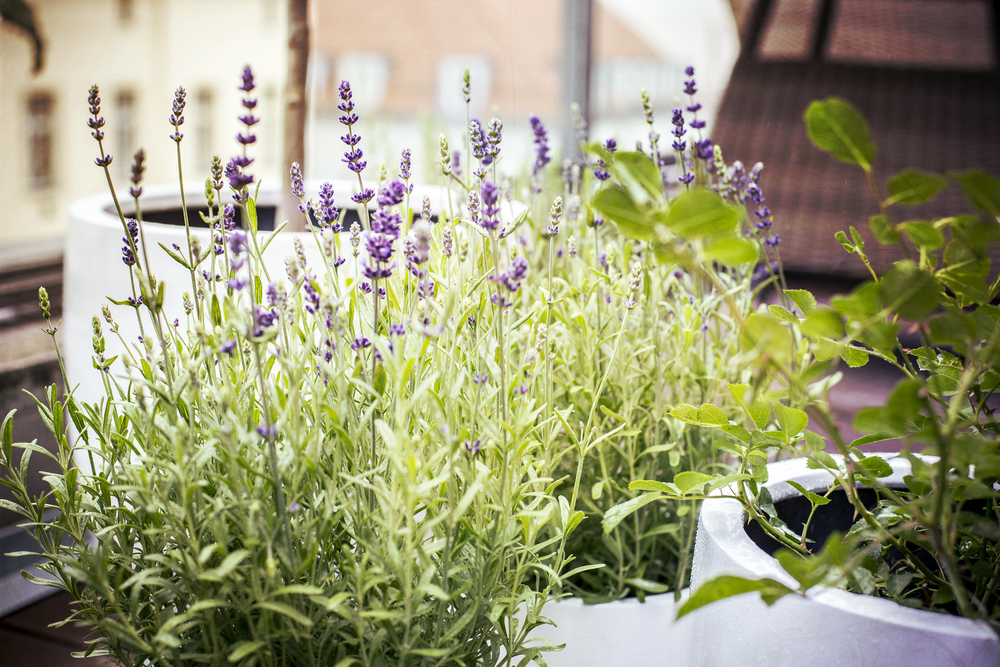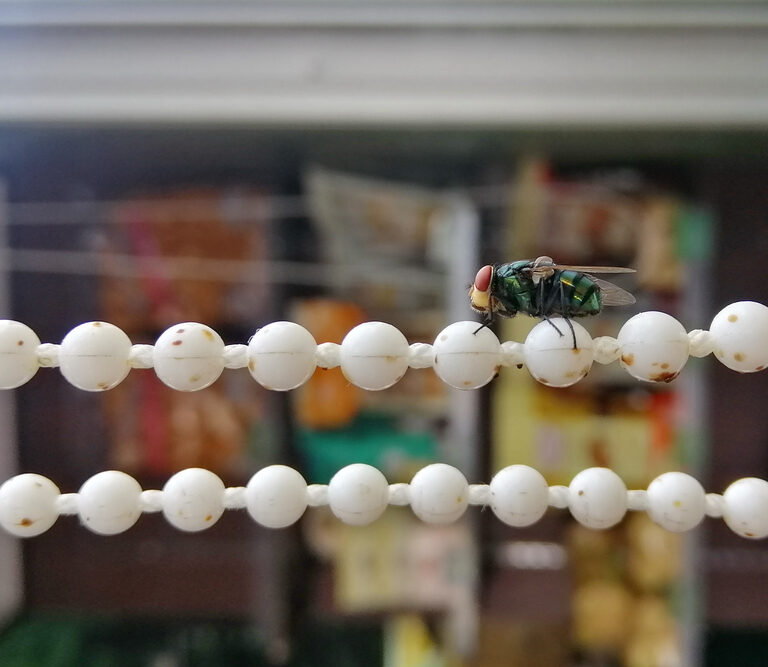Few things in life are as irritating as a wayward housefly wreaking havoc in your home. Not only is the incessant buzzing a nuisance to your ears, but these unhygienic little beasts are rife with disease.
Although houseflies plague every inhabited region on earth, the good news is there are numerous effective ways to keep the pests at bay.
Exclusion, prevention, and extermination are the tricks of the trade. In this article, we’ll give you stacks of handy hints on how to get rid of flies inside your home.
Why You Need to Get Rid of Flies in Your Home
Buzzing around your face, swarming on the trash, and festering over your food, flies are both annoying and gross. But it’s the adverse health effects these ghastly creatures entail that should give you real cause for concern.
When flies land on feces and other forms of filth, they smother themselves in harmful bacteria. And when they latch themselves onto your yet-to-be-eaten food, as they so often do, they transfer a smorgasbord of dangerous germs.
The common housefly is capable of spreading the following diseases:
- Cholera
- E-coli
- Typhoid fever
- Dysentery
- Tuberculosis
- Yaws
- Food poisoning
- Eye infections
How to Stop Flies Getting Inside: Effective Exclusion Strategies
Even the most rigorous pest control regime in the world won’t be any use if you keep letting the brutes fly straight back in again. Flies reproduce at an alarming rate—one adult female can lay up to 900 eggs in her lifetime—so there’s no point trying to kill them faster than they breed. Exclusion is by far the most effective step in getting rid of flies inside.
Flies love sneaking in through your windows, so make sure your fly screens are up to the job. If you find any holes or tears, then patch them up immediately. Most fly screen windows are easy to fix—cut out the appropriate proportion of mesh, then use a screen roller to squish a new spline into the grooves. Check you’re using the correct sized spline as the dimensions vary between windows.
The fly’s other favorite access point is your doors, so keep them firmly shut at all times unless you’ve got a hole-free fly screen in place. Flies tend to zip in as you open and close your doors. Try to get in and out as quickly as possible.
Although less common, flies can also enter your home through exposed cracks and crevices, especially when they detect light on the other side. Examine the caulking on your windows and the weather stripping around your doors and do the necessary repairs.
How to Stop Flies From Thriving Inside: Three Preventative Measures

As you can’t stop every single fly from finding its way inside, you should dissuade them from loitering by cleaning up their favorite haunts. Flies are attracted to three things: feces, food, and filth. Eliminating these from your interior will reduce the appeal for flies to live and breed inside your home.
Cleaning up Droppings
Humans know not to make doo-doo inside their own home (except one specific room), but our beloved pets aren’t necessarily so well trained. Clean up any cat and dog droppings—both inside and out—the moment you see them to stop flies swarming.
Flies prefer to lay their eggs in feces because the moist, nutrient-rich environment improves their chance of survival. A female fly can lay up to 150 eggs at a time, which can hatch in 24 hours—that’s a lot of extra flies for one little dog dropping.
Eliminating Food Scraps
Whether it’s clinging to a pile of dirty dishes or sitting on the kitchen bench, leftover food is all too alluring for the common housefly. The most effective way to reduce the number of flies inside is to eliminate their food source, and that means cleaning up your mess.
- Scrub the dishes after each meal, or at least once per day, rather than letting a big pile accumulate in the sink.
- Store your leftovers in an airtight container when you’ve had your fill and pop them in the fridge—if you don’t fancy eating them later, put them in the bin straight away.
- Feed your pets small portions of food to ensure they don’t leave big chunks of leftovers lying in the bowl.
Managing Your Trash
Flies adore hanging around in filth, so maintaining a strict garbage maintenance routine is of utmost importance. Not only will you encourage flies to take their business elsewhere, but you’ll live in a cleaner and less smelly home.
- Put organic waste, including food scraps, in the bin immediately rather than letting them linger.
- Use a trash bin with a sealed lid—the ones that pop open via a foot petal are convenient, hygienic, and effective against flies.
- Tie and dispose of your trash bags before they become full. Avoid letting your trash overflow.
How to Get Rid of Flies Inside: Eliminating the Pests
Even the most impeccably clean home with an impenetrable fly exclusion zone will occasionally have the odd straggler find its way inside—the pests are so pervasive they’re impossible to avoid entirely. And that’s why elimination is an essential last defense.
Keep the following five tips in mind to eradicate flies buzzing around your home.
1. The Trusty Fly Swat
A tried and tested favorite, few flies are agile enough to evade a well-placed whack with a fly swat. You’ll need to get the timing right, so it’s not the fastest way to eradicate flies (especially if you’re dealing with more than one). Nonetheless, the fly swat provides instant relief without the need for chemical sprays.
A more fun and effective variant is the modern electric swat, a tennis racquet-shaped device that electrocutes the insect mid-air.
2. Pyrethrin-Based Fly Spray
Some people aren’t fond of fly spray, as its chemical composition has a notable odor and could potentially harm humans. However, if you follow the manufacturer’s instructions and use the product sparingly in a well-ventilated area, there’s no need to fear pyrethrin fly sprays. Nonetheless, if you’d prefer to stick with a natural product, chemical-free sprays like REPELSAFE offer a viable alternative.
The active ingredient, pyrethrin, is extremely effective. One quick squirt will obliterate the fly’s central nervous system and send it into a death spiral within seconds.
3. Pot Plants Filled With Herbs

Flies hate the smell of aromatic herbs like basil, lavender, and catnip—the disgusting creatures tend to be drawn to revolting smells instead.
Placing a few herb-filled pot plants around your kitchen will ward flies away from where you prepare your food. And as a neat bonus, you’ll have a selection of garden-fresh herbs on hand to add zest to your cooking.
Put the pot plants on a window sill that receives ample sunlight, and remember to water them every few days.
4. Prepare Essential Oils
Flies can’t stand the smell of essential oils either, and the buzzing pests find lavender and eucalyptus oil especially nauseating. Leave some of the liquid in little bowls or spray it around the house liberally. Not only will you ward off flies, but you’ll improve the overall aroma of your home.
If you don’t fancy paying for essential oils, it’s simple enough to make your own. Infuse your plant of choice into a pale, low scent carrier oil for 48 hours. Next, strain the plant and store the oil in an airtight container.
5. Set Some Traps
If flies are a persistent problem in your place, traps can help keep the numbers down.
One common option is flypaper, a scented adhesive that lures in flies and traps them with its stickiness until they starve. Either purchase a bunch online or make your own: dunk paper strips into a mix of golden syrup and sugar, allow to dry, then hang them from a string. Flypaper gets nasty as the bodies accumulate, so be prepared to replace it often.
Another effective trap is to lure flies with apple cider vinegar—one of the few smells both humans and flies enjoy.
Pour half a cup of apple cider vinegar plus a dash of dishwashing detergent into a glass. Fit cling wrap over the top and hold it in place with a rubber band. Push the bag down a bit to create a funnel shape and cut a hole in the middle. The fly will squeeze inside to sniff the vinegar then sink to the bottom thanks to the detergent.
Again, the trap gets a bit gross once it fills up, so some maintenance is required.
Getting Rid of Flies Inside: Final Thoughts
A fly infestation is a sure-fire way to spoil summer. And the issue becomes even direr when the filthy insects swarm their way inside, making an awful racket and contaminating your food.
Follow our proven exclusion, prevention, and elimination techniques to rid your home of this prevalent pest.
